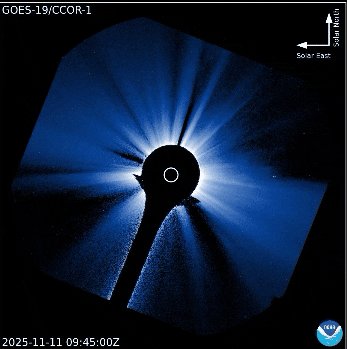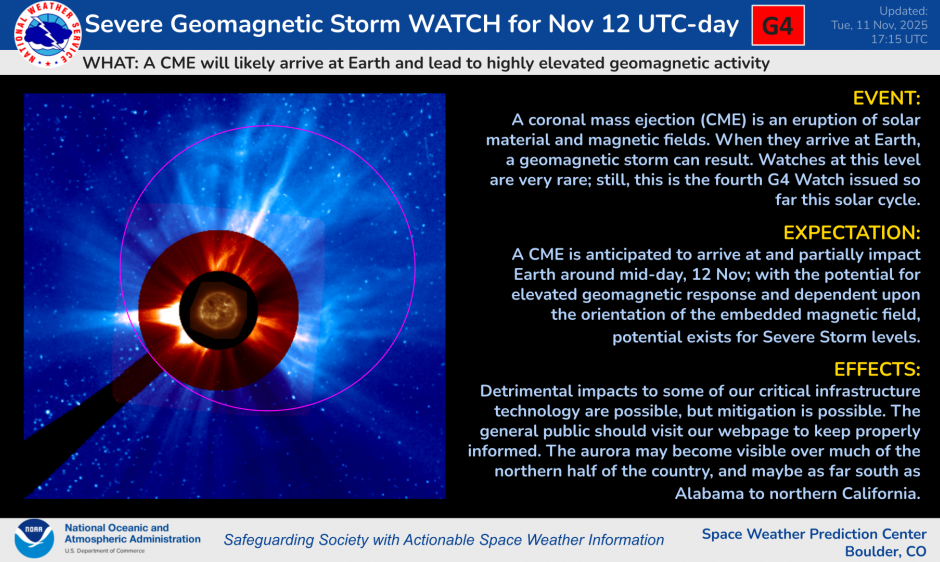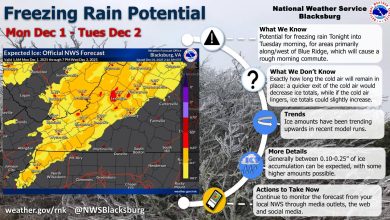
Last Updated on November 12, 2025 11:37 am
Auroras were reported Tuesday evening across much of the United States, including Western North Carolina and more are possible Wednesday night.
The Tuesday night storm came from a pair of X1 flares that occurred earlier in the week on Sunday and Monday. These flares produced a pair of Coronal Mass Ejections, or CMEs, that likely combined on their trip to Earth. A CME is a mass of charged plasma the sun releases during a flare of its magnetic field. This resulted in a strong geomagnetic storm, with an extreme G4 storm reported by NOAA. This is the first G4 storm since last October when the aurora last visited North Carolina.
Another CME is likely on the way that could result in more auroras. Early Tuesday, the sun released a strong X5 solar flare from Sunspot Group 4274. This is the 6th strongest Earth-side flare of the solar cycle, and the strongest since October 3, 2024, when an X9.0 flare occurred.
Tuesday's flare produced a very large CME that you can see on the animation below. As a result, NOAA issued a severe, G4 storm watch for November 12th.

This CME will be running right on the tale of the two CMEs that brought us our storms on Tuesday evening. Based on information from NOAA analysts, but the latest release from them indicates that this X5 CME is moving very fast. The lead edge left the sun moving about 4.4 million mph with the core moving a bit slower at 3.3 million mph. The bulk of the mass will slow down some on its way towards Earth, but the two previous CMEs likely “cleared the road”, so to speak.

The exact arrival time of this largest CME will determine what chances we have to see auroras again after sunset Wednesday evening. For us here in Western NC, we need to hope for a slightly slower arrival time to coincide with the dark skies before the moon rises late Wednesday night. Aurora may once again be naked eye visible, and much like last May and October (and last night) the storms could make for some great photos.
Your best bet is to head out once auroras are being reported and wait. Geomagnetic storms come in ebbs and flows, and can be there one minute but disappear the next. Locally, they most often appear as a bright red glow looking to the north. At times, numerous pillars that appear as bright white streaks shooting straight up can be seen, as well as occasional green aurora moving across the sky.
The image below from NOAA shows the potential reach of naked eye aurora (in green) and photographic (the green line towards the bottom) from a G4 storm.

We'll be keeping a close eye on the forecast, but keep your fingers crossed!











